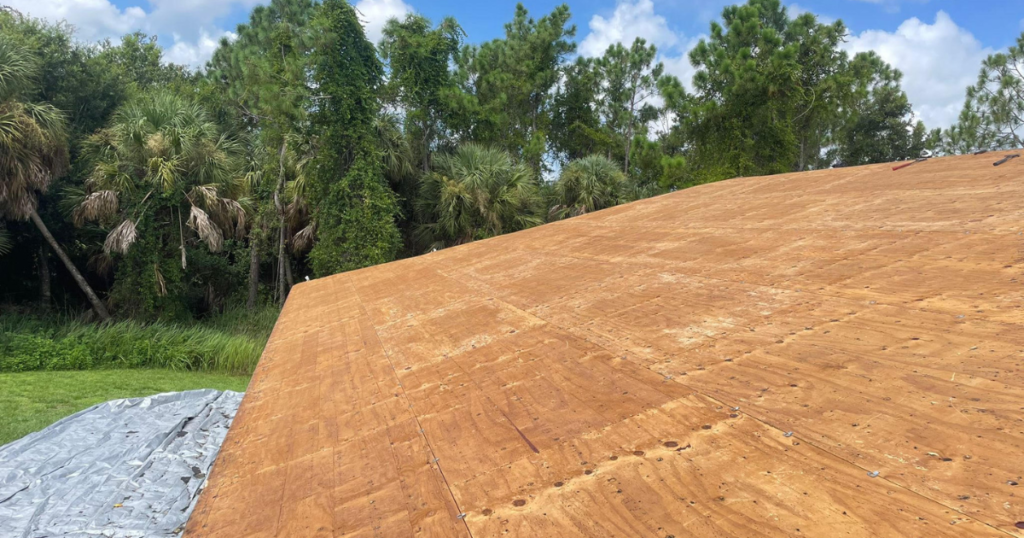Roof maintenance is a critical aspect of homeownership, but it is often surrounded by misconceptions. These myths can lead to costly mistakes, delays in necessary work, or even complete roof failure. Understanding the truth behind these myths is essential for making informed decisions about roof repair and roof replacement. Don’t let myths stand in the way of maintaining a safe and durable roof. Contact our experts today for a free consultation on roof repair and roof replacement tailored to your needs.

Myth 1: Minor Leaks Aren’t a Big Deal
One of the most common myths is that minor roof leaks can be ignored. In reality, even small leaks can cause significant damage over time. Water intrusion can lead to mold growth, structural damage, and higher roof repair costs down the line. It’s crucial to address leaks immediately to prevent further issues.
Myth 2: Roof Repair Is Always Cheaper Than Replacement
Many homeowners believe that roof repair is always the more cost-effective option compared to roof replacement. While repairs may be cheaper in the short term, they can add up over time, especially if your roof is nearing the end of its lifespan. In some cases, roof replacement is the more economical and longer-lasting solution.
Myth 3: A New Roof Can Be Installed Over the Old One
Some people think it’s okay to install a new roof directly over the old one to save time and money. However, this approach can cause problems, including adding unnecessary weight to the structure and hiding underlying issues that need attention. A proper roof replacement should involve removing the old roofing material to inspect the roof deck before installing new shingles.
Myth 4: All Roofing Materials Are the Same
Not all roofing materials offer the same level of protection, durability, or energy efficiency. Depending on your climate, home style, and budget, the best option for roof replacement will vary. It’s essential to choose materials that meet your specific needs and to consult a professional for recommendations.
Myth 5: Roof Repairs Can Be Done by Any Handyman
While a general handyman might be able to fix minor home issues, roof repair is a specialized task that requires expertise. Hiring a licensed and experienced roofing contractor ensures the job is done correctly and safely. Incorrect repairs can lead to more significant problems and may void any warranties on your roofing materials.
Myth 6: Roof Replacement Is Only Necessary When There’s Visible Damage
Visible damage, such as missing shingles or leaks, is a clear sign that roof replacement might be necessary, but it’s not the only indicator. Roofs can wear out over time, and age alone can make a roof replacement a wise investment. Regular inspections can help identify when your roof is nearing the end of its life, even if there aren’t obvious signs of damage. Don’t wait until it’s too late schedule a roof inspection today to determine whether roof repair or roof replacement is the best option for your home.
Myth 7: New Roofs Don’t Need Maintenance
A new roof might seem like it’s maintenance-free, but this is far from the truth. Regular maintenance is essential for extending the life of your roof and ensuring that it performs as expected. Cleaning gutters, removing debris, and checking for damage should be part of your routine, even with a new roof.
Myth 8: Insurance Will Always Cover Roof Repairs
Homeowners often assume that their insurance will cover all roof repair costs, but this isn’t always the case. Coverage can vary depending on the cause of the damage, the age of the roof, and the terms of your policy. It’s important to review your insurance policy and understand what is covered before you need a roof repair or roof replacement.
Myth 9: DIY Roof Repairs Are Just as Good as Professional Work
DIY enthusiasts might be tempted to tackle roof repairs on their own, but this can be a dangerous and costly mistake. Roofing is complex, and improper repairs can lead to further damage, safety hazards, and voided warranties. Hiring a professional ensures that the job is done correctly and that your roof will protect your home for years to come.
In Conclusion
Understanding the realities behind these common myths is crucial for maintaining a safe, durable roof. Whether you need a roof repair or are considering a roof replacement, being informed will help you make the best decisions for your home. Don’t let myths compromise the safety of your home. Contact us today for expert advice and quality roof repair or roof replacement services tailored to your needs. Your roof deserves the best care let us help you protect it.


